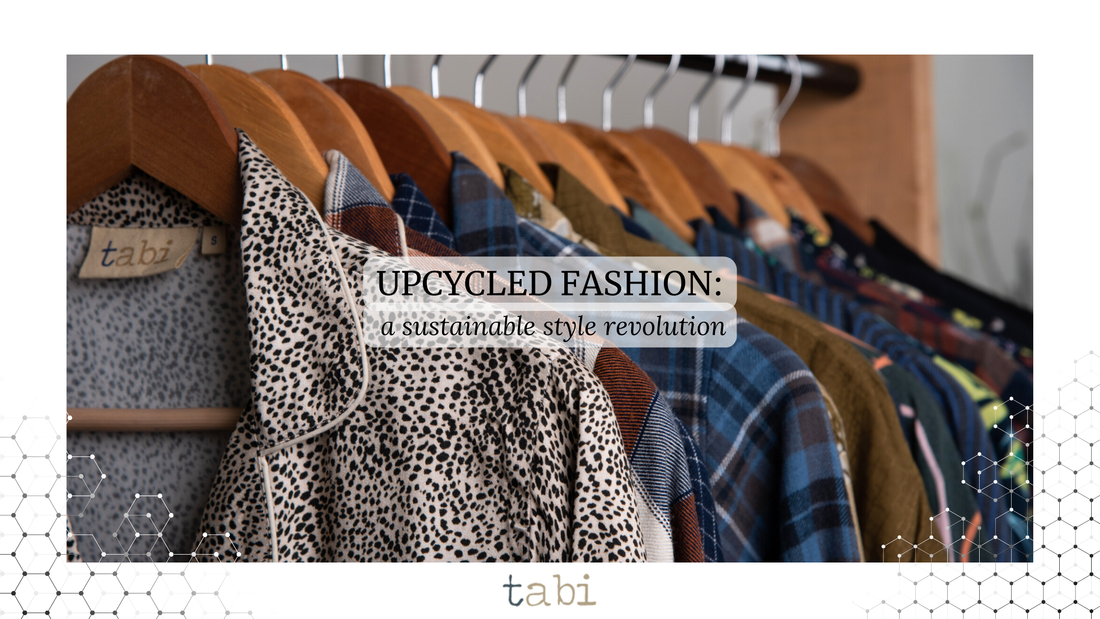
Upcycled Fashion: A Sustainable Style Revolution
In a world increasingly aware of its environmental challenges, the fashion industry stands at a crossroads. With the rise of fast fashion and its detrimental effects on the planet, consumers are seeking alternatives that align with their values. Upcycled fashion has emerged as a transformative solution, marrying creativity with sustainability. This article explores the compelling reasons why you should consider upcycled fashion as a conscious choice for your wardrobe.
1. Environmental Responsibility
The environmental impact of the fashion industry is staggering. It is estimated that over 92 million tons of textile waste are generated each year, with a significant portion ending up in landfills. Upcycled fashion provides a powerful remedy to this issue. By repurposing discarded materials—whether they be old garments, surplus fabrics, or textile remnants—upcycling effectively reduces waste and the need for new resources.
Upcycling not only minimizes landfill contributions but also lowers carbon emissions associated with manufacturing new clothing. The production of textiles consumes vast amounts of water, energy, and raw materials. By choosing upcycled pieces, you are actively participating in a circular economy that seeks to extend the life cycle of products and materials, thus promoting sustainability.
2. Create your own Unique and Individual Style
One of the most exciting aspects of upcycled fashion is the uniqueness it offers. Unlike mass-produced clothing, upcycled pieces are often one-of-a-kind. Each item tells a story, reflecting the creativity and vision of its designer. This individuality allows wearers to express their personal style in ways that are both meaningful and distinct.
In a fashion landscape saturated with similar designs, wearing upcycled garments sets you apart. You can curate a wardrobe that reflects your personality and values, showcasing your commitment to sustainability while avoiding the homogenization that often comes with fast fashion.
3. Ethical Considerations
Ethics in fashion is a topic that continues to gain traction among consumers. The fast fashion model is notorious for exploitative labor practices, often relying on low-wage workers in unsafe conditions. In contrast, many upcycled fashion brands prioritize ethical sourcing and production methods.
By choosing upcycled fashion, you support brands that collaborate with local artisans and craftspeople, ensuring fair wages and safe working conditions. This commitment to ethical practices not only benefits individuals involved in production but also contributes to building resilient communities. As a consumer, your choices have the power to drive positive change within the industry.
4. Quality Over Quantity
Upcycled fashion often emphasizes craftsmanship and quality. Designers who specialize in upcycling tend to focus on the longevity of their pieces, ensuring that they are not only aesthetically pleasing but also durable. This investment in quality translates to garments that last longer, reducing the need for frequent replacements.
In a world where fast fashion encourages a throwaway culture, upcycled fashion champions the idea of valuing what you own. By choosing quality pieces, you are not only making a smarter financial choice but also reducing the environmental impact associated with constant consumption.
5. Cost-Effectiveness
While some upcycled fashion pieces may carry a higher price tag due to their artisanal nature, many affordable options are available. Thrift stores, flea markets, and online platforms often feature upcycled items at competitive prices. These venues allow you to find unique pieces without the financial strain often associated with designer labels.
Moreover, investing in upcycled fashion can lead to long-term savings. By acquiring high-quality, durable items, you reduce the need for frequent purchases, ultimately leading to a more sustainable and economical wardrobe.
6. Cultural and Artistic Expression
Upcycled fashion is not just a trend; it is a form of artistic expression. Designers utilize a variety of techniques to transform discarded materials into wearable art. This creative process often involves intricate design work, showcasing the talent and imagination of the artisans involved.
Supporting upcycled fashion means endorsing a movement that values creativity and innovation. It encourages designers to think outside the box, pushing the boundaries of traditional fashion. By wearing upcycled pieces, you celebrate this artistic endeavor and contribute to a culture that values sustainability alongside creativity.
7. Community and Connection
Choosing upcycled fashion often fosters a sense of community. Many upcycled brands emphasize local production and collaboration, creating networks of artisans and designers. This communal approach not only supports local economies but also fosters connections among like-minded individuals who share a commitment to sustainability.
When you purchase upcycled clothing, you become part of a broader movement that prioritizes environmental stewardship and ethical practices. This sense of belonging can enhance your shopping experience, transforming it from a solitary activity into a meaningful engagement with a community dedicated to positive change.
8. Encouraging a Unique Innovation
As the demand for sustainable practices in fashion grows, upcycled fashion encourages innovation within the industry. Designers are challenged to rethink traditional production methods and materials, leading to the development of new techniques and ideas. This spirit of innovation can inspire broader changes in the fashion industry, promoting a more sustainable future for all.
Furthermore, as more consumers embrace upcycling, larger brands may begin to adopt these practices, creating a ripple effect that can lead to systemic change. By supporting upcycled fashion, you are not just making a personal choice; you are contributing to a larger movement that advocates for a sustainable and ethical fashion industry.
Conclusion
Choosing upcycled fashion is a multifaceted decision that encompasses environmental responsibility, ethical considerations, and a celebration of individuality. By embracing this sustainable approach, you not only enrich your wardrobe with unique and high-quality pieces but also actively participate in a movement that seeks to redefine the fashion industry.
As consumers, our choices hold significant power. By opting for upcycled fashion, we can drive demand for sustainable practices and encourage brands to adopt more ethical production methods. In this evolving landscape, upcycled fashion invites us to rethink our relationship with clothing, urging us to embrace a more thoughtful, creative, and responsible approach to style. Make the switch to upcycled fashion and be part of a transformative revolution that prioritizes both the planet and your personal expression.
FAQs
1. What is upcycled fashion?
Upcycled fashion is the transformation of old or discarded clothing and materials into new garments or accessories. This reduces waste and the amount of fresh resources that will be used to produce clothing, thus making fashion more sustainable.
2. How does upcycled fashion help the environment?
The upcycling of fashion reduces the amount of clothing waste from being embedded in landfills, reduces carbon emissions caused by producing new clothing pieces, saves water, and energy, and promotes a circular economy with less demand on fast fashion.
3. What are the most commonly used materials in upcycling fashion?
Typical materials that are used are clothing remnants, excess fabric from available productions, other scraps made while putting together garments, and many others, such as old drapery, handbags, or even out-of-date upholstery for furniture pieces. There is usually some form of artistic and creative twist with these materials, so they end up making something unique.
4. Is upcycled fashion more expensive than regular fashion?
Upcycled clothing is probably going to be priced higher, unlike fast fashion, considering the work and effort that was needed into creating them, but at the same time, maybe more accessible than sustainable high-end brands. In short, prices are set according to the designer and product.
5. How do I apply upcycled fashion in my life?
As an alternative, look through thrift stores, flea markets, and online platforms for the offer of second-hand items. Second hand is not the only way to get second-hand; you can check for brands that specialize in upcycled fashion or go all out and try doing DIY projects on your old clothes to transform them into something new and stylish.
